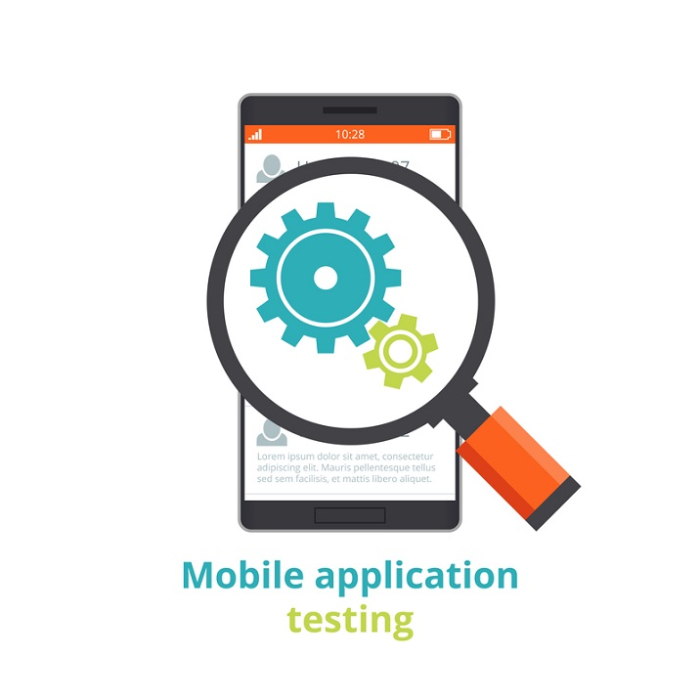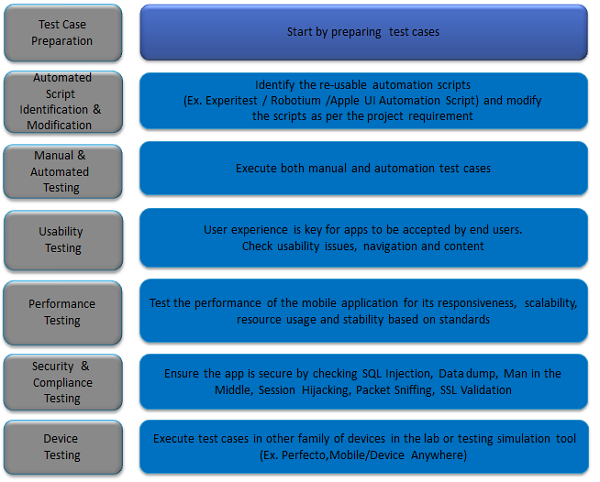
 Data Structure
Data Structure Networking
Networking RDBMS
RDBMS Operating System
Operating System Java
Java MS Excel
MS Excel iOS
iOS HTML
HTML CSS
CSS Android
Android Python
Python C Programming
C Programming C++
C++ C#
C# MongoDB
MongoDB MySQL
MySQL Javascript
Javascript PHP
PHPPhysics
Chemistry
Biology
Mathematics
English
Economics
Psychology
Social Studies
Fashion Studies
Legal Studies
- Selected Reading
- UPSC IAS Exams Notes
- Developer's Best Practices
- Questions and Answers
- Effective Resume Writing
- HR Interview Questions
- Computer Glossary
- Who is Who
How to Start with Mobile Testing?
A mobile device has become a very important device in today’s technology-enabled world. Hence, it becomes really important to have a device which is dependable and robust, which has been correctly tested. Mobile Testing is a process of testing the quality of the mobile devices. The testing will be conducted on both software and hardware, including the mobile apps. For testing a mobile, we include various parts of a mobile, like hardware, software, apps, widgets, User Interface, and properties.

They are different Mobile Operating systems which are available in the market. Some of the major systems being used are Android, IOS, Blackberry, Symbian etc. With different brands, comes different models and different properties.
To start off with mobile testing, you need to have prior knowledge of software testing and some idea about the automation tools. If you have worked on any test automation tool, it would be a great advantage. It is also important to understand how the mobile works and what are its key requirements.
Types of Testing
When we are discussing mobile testing, we can majorly segregate the whole concept in two key areas −
Hardware Testing
The hardware of the mobile device is tested for the compatibility and robustness. This type of testing also involves testing various components of the mobile device, and their integration with the software components. The device including the internal processors, internal hardware, screen sizes, resolution, space or memory, camera, radio, Bluetooth, WIFI etc.
Software Testing
The software part of mobile testing usually covers the testing of various software’s, widgets and applications on the mobile device. The applications that work on mobile devices and their functionality are tested. The apps on mobile can again be divided into 3 categories – native, mobile web and hybrid apps. Even in the mobile applications, there are few basic differences that are important to understanding −

a) Native apps − A native application is created for use on a platform like mobile and tablets.
b) Mobile web apps are server-side apps to access website/s on mobiles using different browsers like chrome, Firefox by connecting to a mobile network or wireless network like WIFI.
c) Hybrid apps are combinations of native app and web app. They run on devices or offline and are written using web technologies like HTML5 and CSS.
Testing Process
Mobile application testing is a process by which application software developed for handheld mobile devices is tested for its functionality, usability, and consistency. Mobile application testing can be automated or manual type of testing.
The Testing process of mobile application testing is quite similar to the typical STLC (Software Test Life Cycle). A typical end-to-end mobile testing process should start from creating test cases of the application, performing user acceptance and finally device testing stage. The different phases of the Mobile testing life cycle are −
Test Case Preparation − The mobile testing starts with the creation of test cases. The requirements are identified and the corresponding test cases are written and reviewed. These test cases are then stored in a test management tool.
Automated Scripts Creation − Once the test cases are created, the automation scripts are prepared. The test cases for automation are identified and the scripts for the same are recorded. The scripts are then reviewed and finalized.
Test Case Execution − The test cases and test scripts are executed as per the requirement of various different operating systems, browsers and screen resolutions. The defects are reported and then closed.
Integration Testing − The integration testing is performed to ensure that the different components and modules are not impacting the working of the apps in the mobile device. Various tools are used to simulate the mobile device.
Performance Testing − It is really important that the performance of the mobile device is good. The software and apps on the mobile devices to be fast and quick. Hence, the performance tools are used to check and improve the performance of the apps on the mobile device.
Security Testing − Being so much information shared online and a lot of sensitive data stored in mobile devices, the security testing becomes extremely important. The security of the data stored and the data shared via mobile devices is tested.
User Acceptance Testing − User Acceptance Testing is done to cross check whether all the initial requirements are incorporated in the final output. This testing is equally important to validate against what is expected and what has been created.
Device Testing − Lastly, the complete device is tested as a whole to check the usability and the feedbacks from the group are collated.

Mobile Testing is quite similar to software testing but the way it is performed is completely different. The mock devices are used for testing and the expectations of the end users are completely different. The testing is expected to unveil the critical areas from where the mobile devices will not be able to recover.

